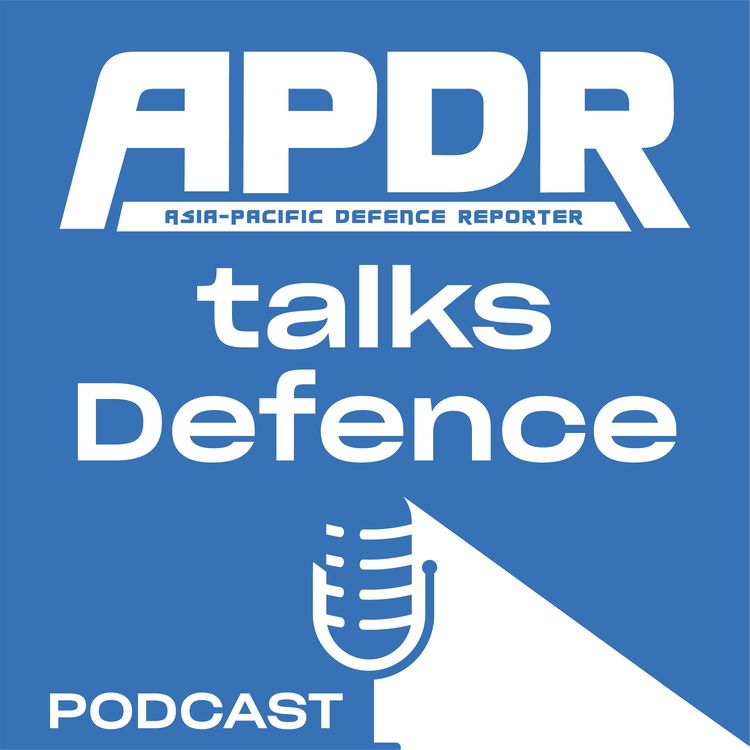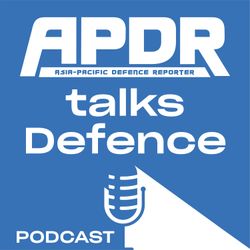Share

Asia Pacific Defence Reporter
Episode 36
Firstly, let’s have a look at the delayed F-35 program – an issue that has received very little coverage in Australia. The government promised that all 72 jets would be in country by the end of 2023. Well they aren’t, and no one is sure when the final nine will be delivered. Defence isn’t saying anything and the only comment from the government is it makes no difference whatsoever – in which case why not sell the last nine and stick with the 63 that we have? Also some snarky comments about the relationship Defence Minister Richard Marles has with the Department of Defence. Next – Taipan helicopters and there have been some developments, but none of them are particularly encouraging. I suggest that the Federal opposition does the job for which it is being paid. And finally, the impending government response into the surface fleet – and it looks like the Arafura class offshore patrol vessels will be a casualty. If so, more than $1.5 billion has been wasted. Does anyone care?
More episodes
View all episodes

124. Episode 124
19:49||Ep. 124Before discussing the Prime Minister's strange reluctance to call a Royal Commission into the Bondi terrorist attack we have to talk about the increasingly erratic behaviour of Donald Trump. Threats from the US to take over Greenland are increasing, with greater tariffs on European countries now also part of the mix. This is because Trump claimed the Europeans weren't doing enough to defend the island so countries have sent small military delegations there to do some research - but the US President now claims this is an escalation. Here, Defence Minister Richard Marles has responded in his usual spineless fashion refusing to comment on US behaviour saying instead he thinks NATO will remain united when all sensible analysis comes to the opposite conclusion. It's time for Australia to have an open, mature debate about the nature of the US alliance and what we expect to get out of it. The country expects leadership - and it isn't getting it.
Episode 123
20:25|It's a good thing we waited a couple of weeks before commenting on the US attack on Venezuela because the entire thing is getting stranger by the day. It clearly wasn't about regime change and even the logic of seizing oil reserves is looking shaky. It might have been because Donald Trump felt his dancing style was being mocked by the former Venezuelan President. As disturbing as that is, of even more concern is the US threatening again to acquire Greenland - by force, if necessary. This is completely insane and would destroy NATO, but Trump seems to be obsessed with it. If the US continues to destroy the existing rules based order, will Australian politicians finally grow a spine or will they find ever more creative ways to grovel?
46. Episode 122
14:24||Season 3, Ep. 46We start with a few thoughts on the awful terrorist attack on members of the Jewish community holding a party on Bondi Beach. But we cannot ignore other developments and have some further thoughts about the new US National Security Strategy, which explicitly attacks Europe and gives both Russia and China a leave pass. The official policy of the US is that they will now support European far-right political parties in what is obviously interference in the internal affairs of other nations. People should be outraged - as they would be if China said they planned to do the same thing in Asia. Our politicians won't say anything because they are moral cowards. Finally - instead of buying second hand Virginia class subs from the US, let's buy 40 year old Los Angeles boats instead.
2. Xinjiang Media Tour - Part 2
18:56||Ep. 2The adventure continues with a late arrival in Kashgar - also known as Kashi - and a crowded program of educational and cultural events. The city has a very long history and is a colourful mix of cultures and religions.Then it was a flight to Ili, the capital of the Kazakh autonomous prefecture which was different again from Urumqi and Kashgar. Treats included milk beer and a visit to the former governor's palace - a frequent residence for exiles from eastern parts of China.Then a return to Urumqi for the final part of the tour and one of the most consequential events - a visit to the Exhibition of Counterterrorism and Deradicalisation in Xinjiang. This explained why - in often gruesome detail - why security crackdowns have been necessary.The quick summary of the 8 day program - Xinjiang is friendly, interesting, and well worth a visit.
45. Episode 121
19:49||Season 3, Ep. 45It's been a busy time internationally with the US releasing a shocking National Security Strategy document that throws Europe under a bus and favours improved relations with Russia. Australian politicians need to take note. But also some thoughts on the restructure of Defence so that acquisitions will be done by a separate agency. That's all well and good but the main improvements need to be cultural and attitudinal on the part of Defence managers. Keeping the same people and giving them new titles won't make the slightest difference. The rumours were correct and more aid will go to Ukraine - but given that the US is in the pocket of Russia a lot more will be needed. A final thought - the US is currently siding with China over their ugly war of words with Japan. Why should Australia be any different?
1. Xinjiang Media Tour - Part 1
22:03||Ep. 1APDR was invited for a media tour to China’s Xinjiang autonomous region in September and we decided that listeners will be interested in more details than have so far been reported. This podcast is part travel log, part analysis and part personal commentary about the experience. We set the scene with some thoughts about China and the first part of the visit to Urumqi, the capital city of Xinjiang. Part 2 next week will begin with arriving in Kashgar. Comments on our website asiapacificdefencereporter.com are welcome, as are emails to: kym.bergmann@venturamedia.netAbusive content will not be allowed.
44. Episode 120
19:22||Season 3, Ep. 44We start with breaking news of a Defence restructure - though it's too early to tell if it will make a difference. Then - despite the best efforts of many - the government is refusing to close a loophole allowing Russian oil to be sold in Australia, though it is possible that a new aid package is being developed. It can't come fast enough with the US continuing to side with Russia in a plan that would end Ukraine's independence - and we go into the main motivation: greed and the chance for the Trump family and their friends to make untold billions from the situation. Finally some words about why the US is moving towards military action against Venezuela - and that's more greed at work. Australia's politicians have to realise that the US will no longer help Australia unless there's something in it for them.
43. Episode 119
20:22||Season 3, Ep. 43Once again, there have been shocking developments regarding US support for Ukraine as it fights the Russian invasion. President Trump has given Ukraine an ultimatum that amounts to a surrender or lose his support. In the so-called peace proposal, Russia does not have to make any concessions. It is now obvious that President $Trump is for sale to the highest bidder - and it's time Australian policy makers realised that. The first thing we should do is to provide more aid to Ukraine because despite talking about the rules based order in the last 12 months nothing has been donated to Kiev. Some current Australian policies actually benefit Russia. Finally some words on why Mogami frigates will never be built in Australia.
42. Episode 118
19:08||Season 3, Ep. 42We start with some more information about the major Indo-Pacific maritime conference in Sydney and the description of it by Defence Minister Richard Marles as a type of Disneyland. Unfortunately, this is emblematic of the trivialisation of Defence topics in this country and partly explains why there has never been a serious discussion about acquiring nuclear powered submarines, or many of the embarrassing details of SEA 3000. Looking internationally, the US is behaving erratically with President Donald Trump now being openly bribed. Is this how a reliable security partner behaves? On top of that, there might be a few more problems coming up for the pace of US submarine construction.